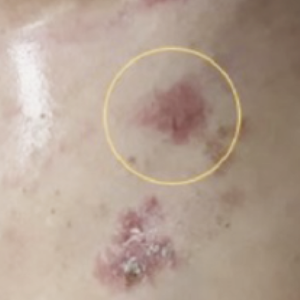A case report of Hailey-Hailey disease treated with fractional carbon dioxide laser

All claims expressed in this article are solely those of the authors and do not necessarily represent those of their affiliated organizations, or those of the publisher, the editors and the reviewers. Any product that may be evaluated in this article or claim that may be made by its manufacturer is not guaranteed or endorsed by the publisher.
Authors
Hailey-Hailey disease (HHD), or familial benign pemphigus, is a rare genetic condition characterized by recurrent blisters and erosions with a predilection for intertriginous areas. There is no specific treatment for HHD. Topical and systemic treatments tend to provide temporary remission. Alternative treatment (surgical interventions such as dermabrasion, excision, and laser) has been shown to prolong remission. Considering the risk of complications associated with surgical modalities, laser is often preferred as an alternative for patients failing to respond to first-line therapies. We report a case of recalcitrant HHD successfully treated with a fractional ablative CO2 laser procedure (wavelength of 10600 nm, power of 7-10 W, 2-3 passes) on a 35-year-old female. The patient has a 7-year history of therapy-resistant HHD. A 2-month followup showed substantially resolved lesions, with mild erythema and post-inflammatory hyperpigmentation in treated areas.
How to Cite

This work is licensed under a Creative Commons Attribution-NonCommercial 4.0 International License.








